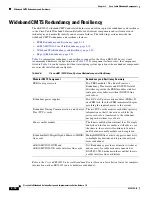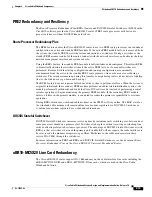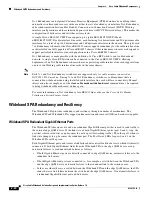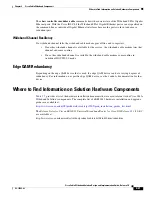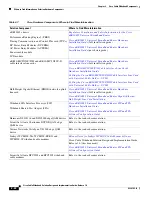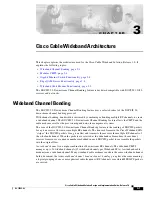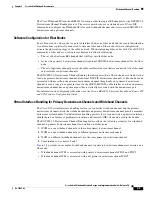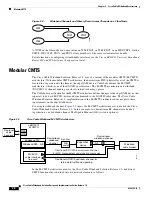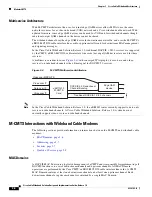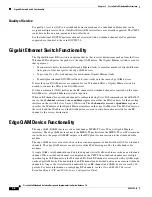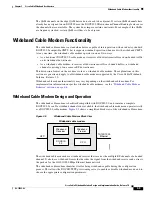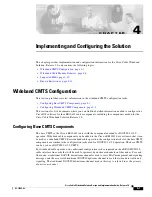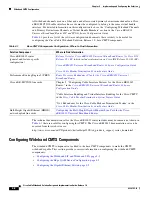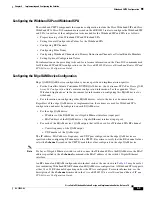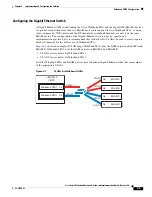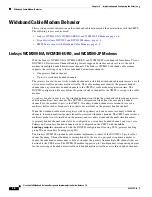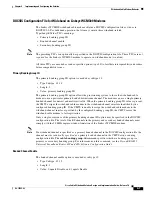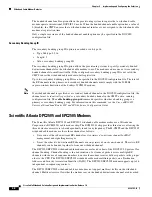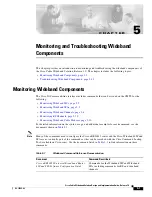
3-9
Cisco Cable Wideband Solution Design and Implementation Guide, Release 1.0
OL-10705-02
Chapter 3 Cisco Cable Wideband Architecture
Wideband Cable Modem Functionality
The QAM channels on the edge QAM device do not need to be adjacent. If certain QAM channels have
already been assigned to non-DOCSIS uses, the DOCSIS 3.0 Downstream Channel Bonding feature uses
the channels that are available. The system does impose certain constraints. For example, if the QAMs
are frequency stacked, certain QAMs will have to be adjacent.
Wideband Cable Modem Functionality
The wideband cable modem is a standalone device capable of interoperation with an industry standard
DOCSIS 2.0 compatible CMTS, but it supports wideband operation when used with a wideband CMTS.
At any one time, the wideband cable modem operates in one of two ways:
•
As a traditional DOCSIS 2.0 cable modem, it receives all downstream traffic as non-bonded traffic
on its traditional downstream.
•
As a wideband cable modem, it receives all downstream traffic as bonded traffic—a wideband
channel consisting of one or more RF downstreams.
This discussion focuses on the modem’s role as a wideband cable modem. The explanations in this
section are generic and apply to all wideband cable modems supported by the Cisco Cable Wideband
Solution, Release 1.0.
Wideband cable modem functionality may vary depending on the wideband cable modem. For
implementation information on specific wideband cable modems, see the
“Wideband Cable Modem
Behavior” section on page 4-6
.
Wideband Cable Modem Design and Operation
The wideband cable modem is backward compatible with DOCSIS 2.0 and contains a complete
DOCSIS 2.0 core. If a wideband channel is not available, the wideband cable modem can operate strictly
as a DOCSIS 2.0 cable modem.
Figure 3-5
shows a simplified block view of the wideband cable modem.
Figure 3-5
Wideband Cable Modem Block View
The wideband cable modem has a wideband receiver that receives the multiple RF channels of a bonded
channel. It also has a wideband framer that decodes the signal from the wideband receiver and extracts
the packets for the 10/100/1000 Mbps Ethernet home network.
The wideband cable modem identifies itself as being wideband-capable during the configuration
process. This allows the DOCSIS TFTP provisioning server to enable or disable wideband mode, and to
choose the appropriate configuration parameters.
190006
HFC
10/100/1000
Ethernet
Wideband
Receiver
Wideband
Framer
DOCSIS
2.0
CPU
Wideband cable modem


